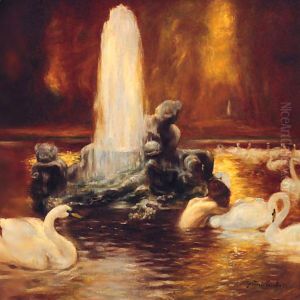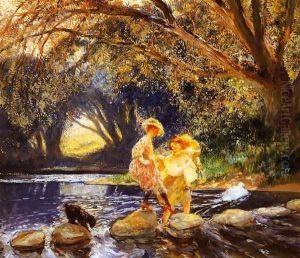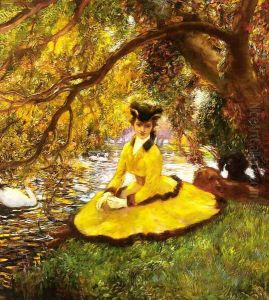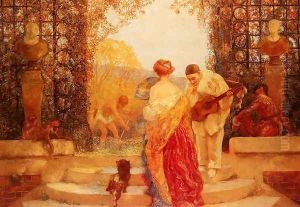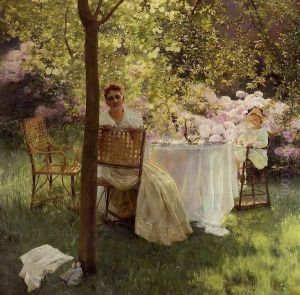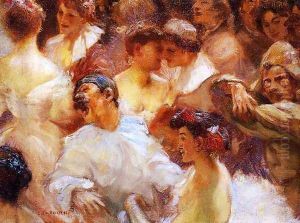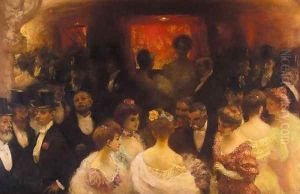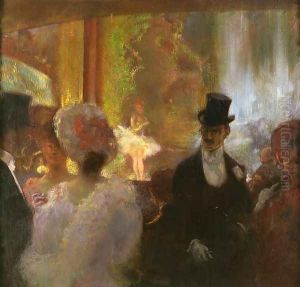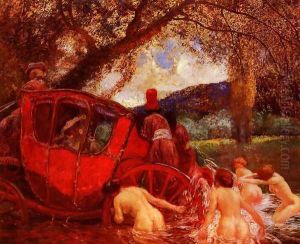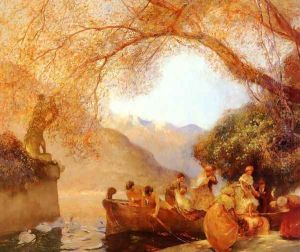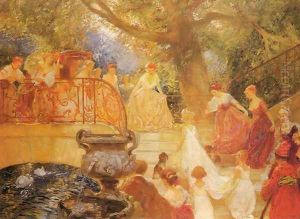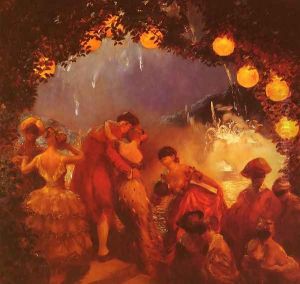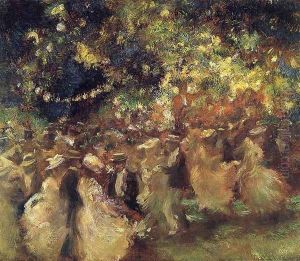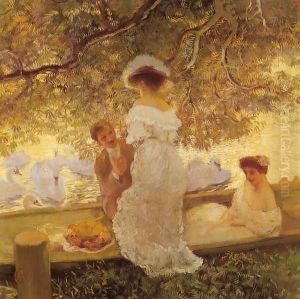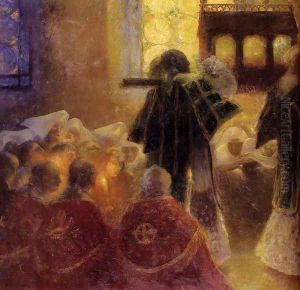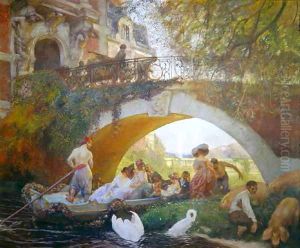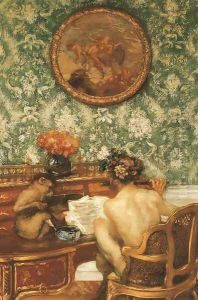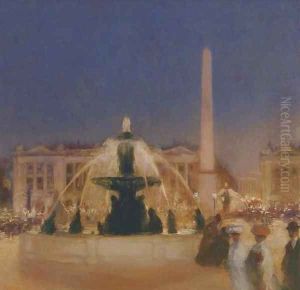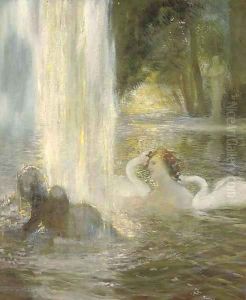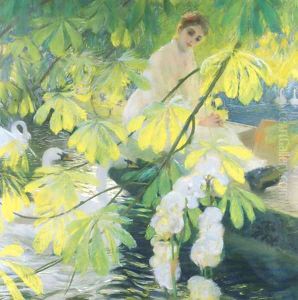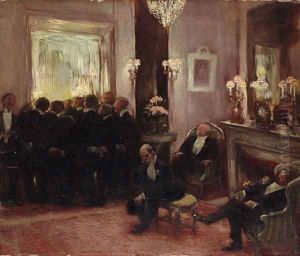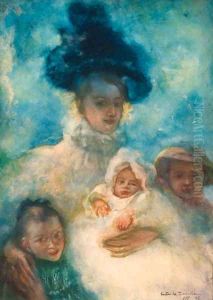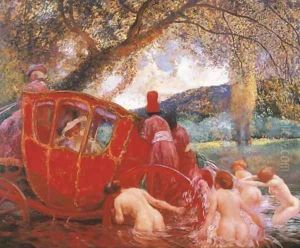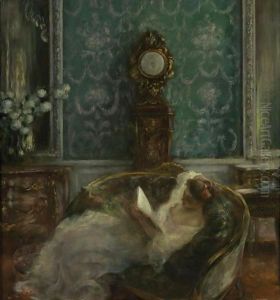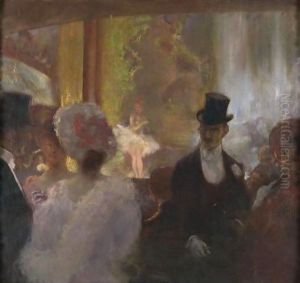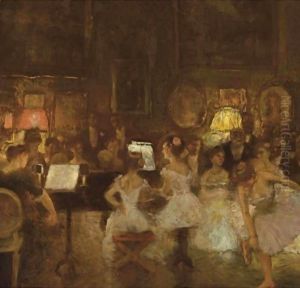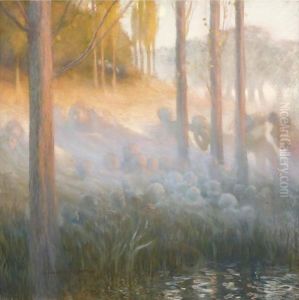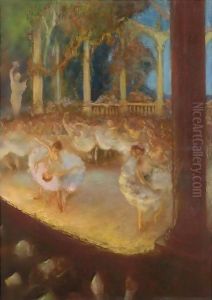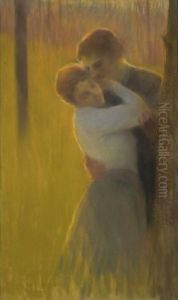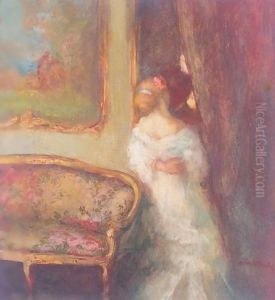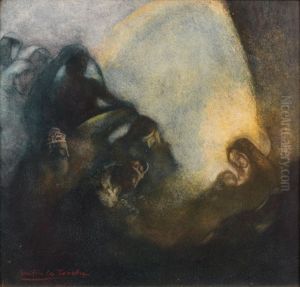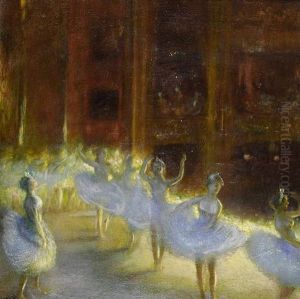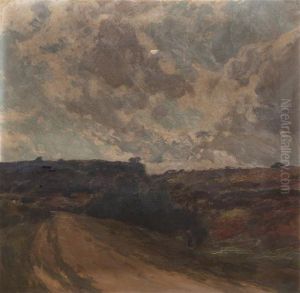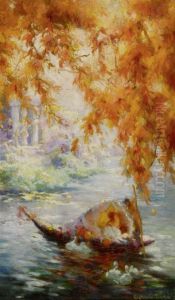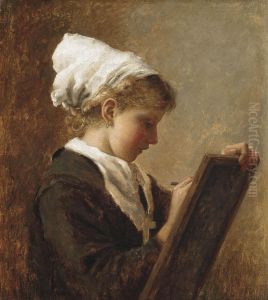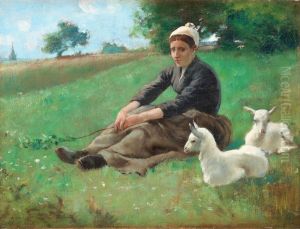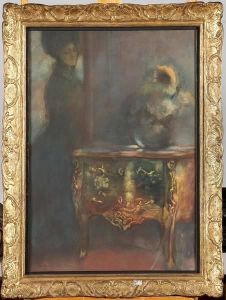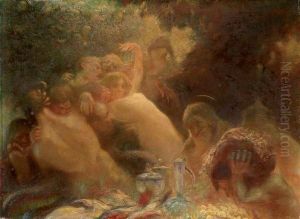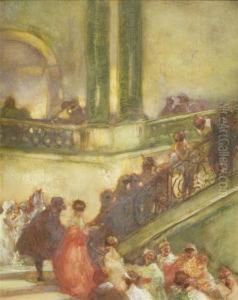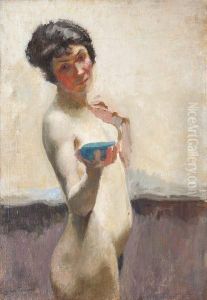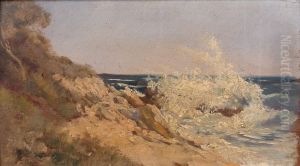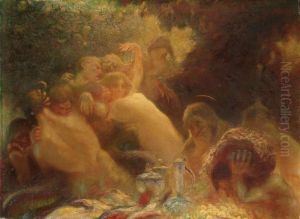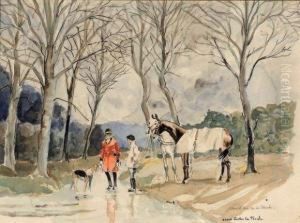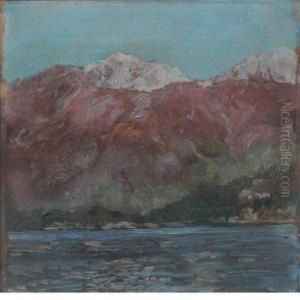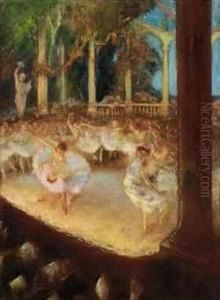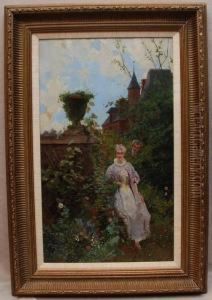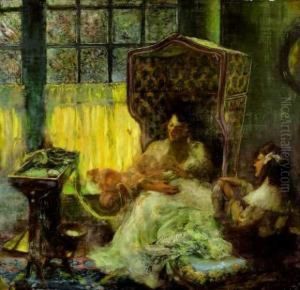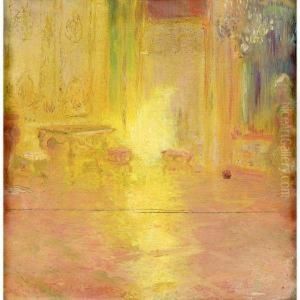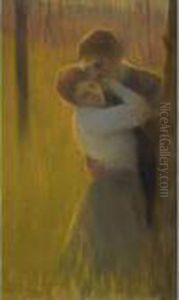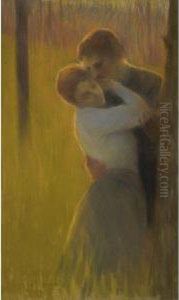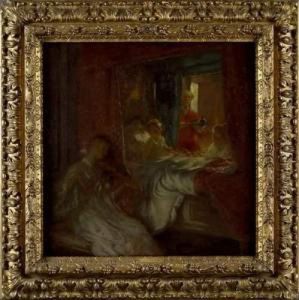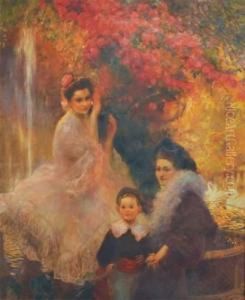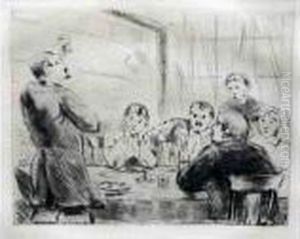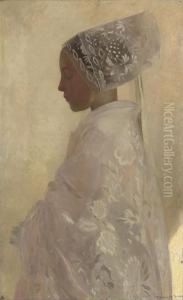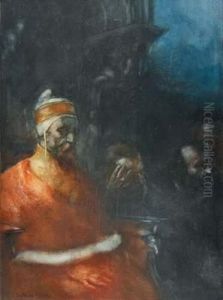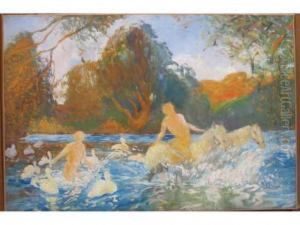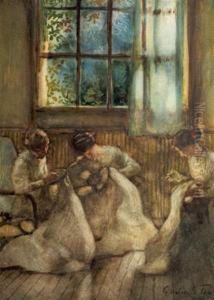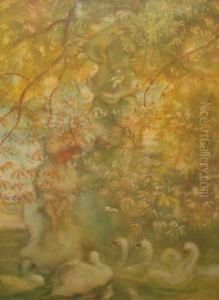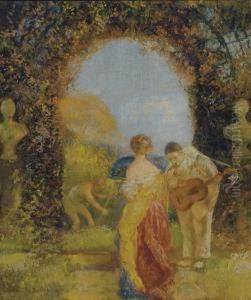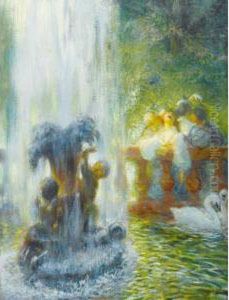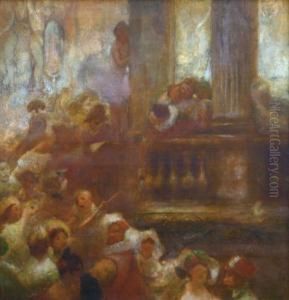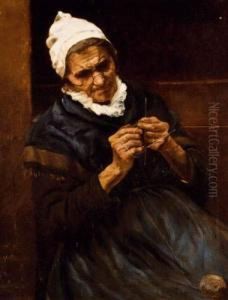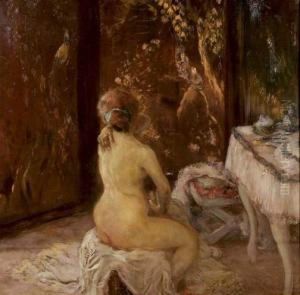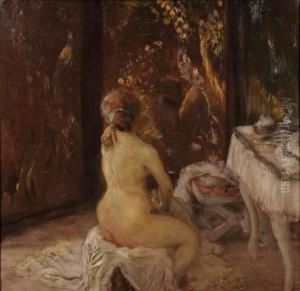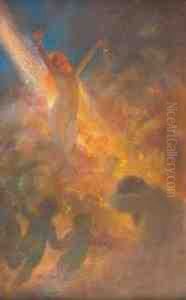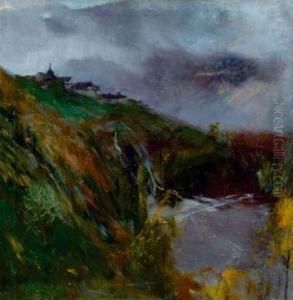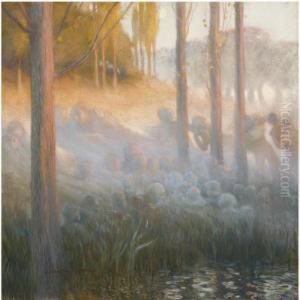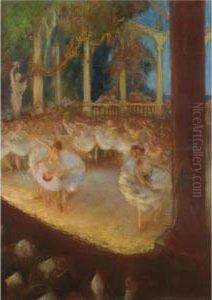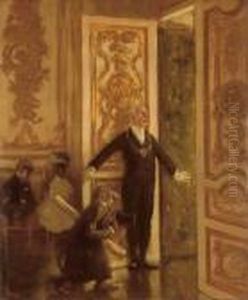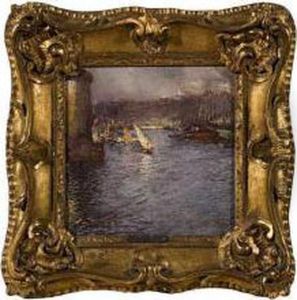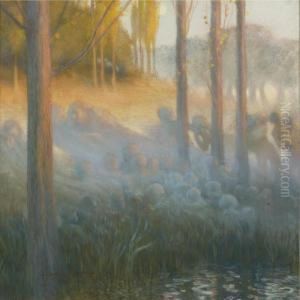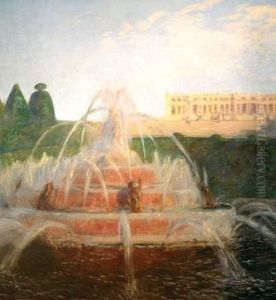Gaston de Latouche Paintings
Gaston de Latouche, full name Jean Joseph Marie Gaston de Latouche, was a versatile French painter and artist known for his eclectic style that combined elements of the Rococo revival, Symbolism, and Art Nouveau. Born on October 29, 1854, in Saint-Cloud, near Paris, de Latouche initially embarked on a career in law, following his father's wishes. However, his passion for art prevailed, and he eventually turned to painting, studying under the academic artist Félix-Joseph Barrias.
De Latouche's early works were influenced by his academic training, but he soon began to develop his own style. He was particularly drawn to the 18th-century Rococo movement, which inspired many of his paintings. His works are characterized by a lighthearted elegance, often reviving the frivolity and grace of Rococo art, with a touch of modernity that appealed to the Parisian society of his time.
Throughout his career, de Latouche was a regular exhibitor at the Paris Salon, where he received several medals for his works. He was also awarded the Legion of Honor in 1900. De Latouche was not limited to painting; he also worked with pastels, created decorative panels, and undertook the restoration of Versailles' Petit Trianon, demonstrating his versatility and respect for historical artistry.
In addition to his historical and allegorical scenes, de Latouche also produced landscapes, still lifes, and portraits. His later works show the influence of Symbolism, with more enigmatic and dreamlike qualities. He was friends with important cultural figures of his time, including the writer Anatole France, who may have influenced some of his Symbolist tendencies.
Gaston de Latouche's work was well received during his lifetime, and he enjoyed the patronage of wealthy art collectors. His ability to blend different artistic styles made his work distinctive and allowed him to navigate the changing tastes of the art world at the turn of the century.
De Latouche's career was cut short by his sudden death on July 12, 1913, in Paris. Although his work was somewhat overshadowed by the emerging avant-garde movements of the 20th century, his contribution to the revival of Rococo aesthetics and his involvement in the decorative arts have earned him a place in the history of French art. His works can be found in various museums and private collections around the world.
